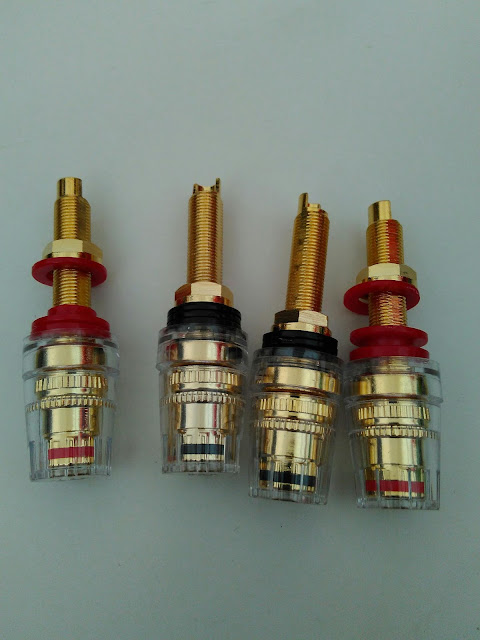A brief intro to Rhodium for those not familiar. Rhodium is a rare earth element in the same group as platinum, gold, silver, etc. Quote from Wikipedia - "Being a noble metal, pure rhodium is inert. However, chemical complexes of rhodium can be reactive."
Rhodium plated items are not cheap. They are normally available as high end automobile spark plugs as well as high end hifi connectors.
Decided not to purchase any Rhodium plated connectors after someone on a hifi forum who was touting the benefits of using an high end contact cleaning fluid on their own Cardas Rhodium speaker connectors. He show a pix of the contaminants after using the high end contact cleaning fluid on a cotton bud afterwards, as well as reporting audioble reproduction improvement.
One has to ask - is the Rhodium plating of the Cardas Rhodium connector pure???
Based on the chemical properties of the element Rhodium, it should be inert. In theory, when he cleaned the Cardas Rhodium connectors, there should be no noticable residue to the naked eye - not the proportionally largish dark patch on the cotton bud, as shown ... unless it was not pure Rhodium but a chemical complex based on Rhodium.
Hence my personal logic is why pay extra for this Rhodium plating when one still has to clean the connector vs a normal gold plated version ... unless you have plenty of extra cash to spare
Rhodium plated items are not cheap. They are normally available as high end automobile spark plugs as well as high end hifi connectors.
Decided not to purchase any Rhodium plated connectors after someone on a hifi forum who was touting the benefits of using an high end contact cleaning fluid on their own Cardas Rhodium speaker connectors. He show a pix of the contaminants after using the high end contact cleaning fluid on a cotton bud afterwards, as well as reporting audioble reproduction improvement.
One has to ask - is the Rhodium plating of the Cardas Rhodium connector pure???
Based on the chemical properties of the element Rhodium, it should be inert. In theory, when he cleaned the Cardas Rhodium connectors, there should be no noticable residue to the naked eye - not the proportionally largish dark patch on the cotton bud, as shown ... unless it was not pure Rhodium but a chemical complex based on Rhodium.
Hence my personal logic is why pay extra for this Rhodium plating when one still has to clean the connector vs a normal gold plated version ... unless you have plenty of extra cash to spare






